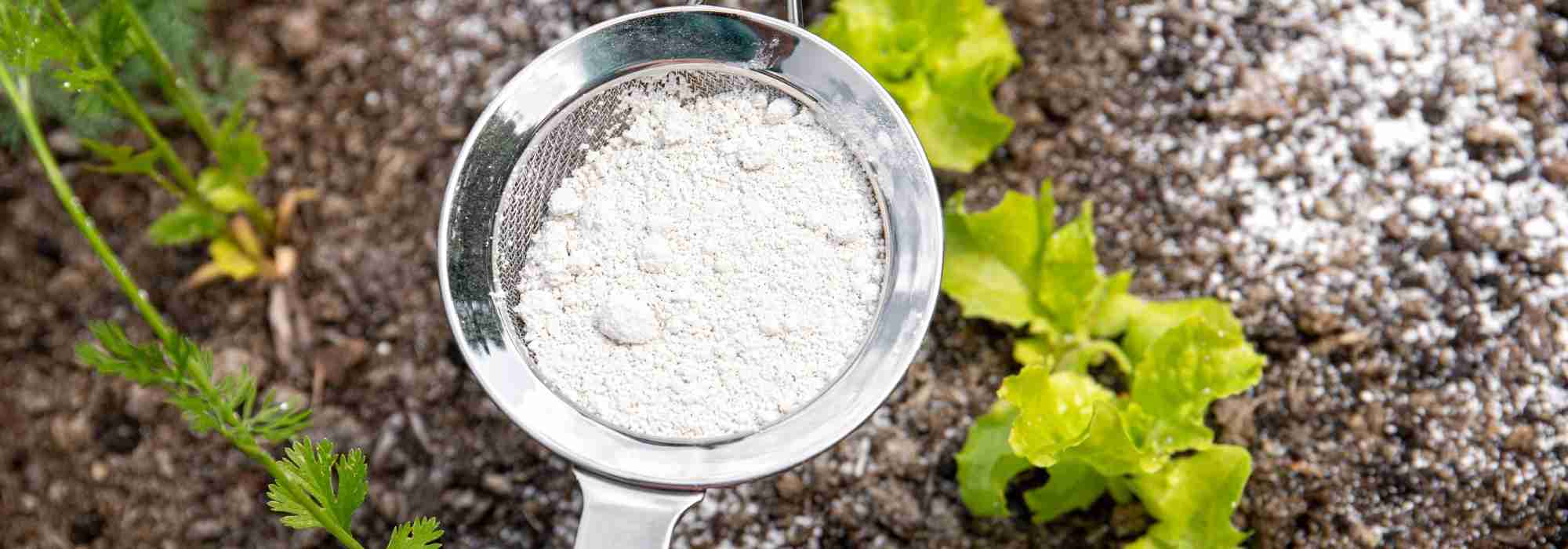
How to use diatomaceous earth in the garden?
Insecticidal Properties and Other Uses of Diatomaceous Earth
Contents
If you’re a fan of natural solutions for home and garden use, you may have already heard of diatomaceous earth. Highly effective in homes as a natural insecticidal against ants, bedbugs, fleas and cockroaches, it’s also useful in chicken coops to prevent red mite infestations. So why not in the garden, since it’s a completely natural product derived from siliceous sedimentary rock? Indeed, this white to grey powder, light and crumbly, can prove formidable against pests invading your vegetable patch, orchard or ornamental garden.
Discover the uses of diatomaceous earth in the garden as a natural insecticidal, its advantages over other products, but also its drawbacks, restrictions and safety precautions.
What exactly is diatomaceous earth?
Sometimes called infusorial earth, diatomaceous earth (or diatoms) is a powder derived from a siliceous sedimentary rock, itself formed by the fossilisation of microscopic algae shells that lived in lakes millions of years ago. This diatomite, extracted from quarries, is a soft, porous, lightweight and crumbly rock, absorbent and filtering, with an appearance similar to flour. But there’s another property that makes all the difference: diatomaceous earth is abrasive. It therefore has multiple uses, especially as it is a 100% natural product.
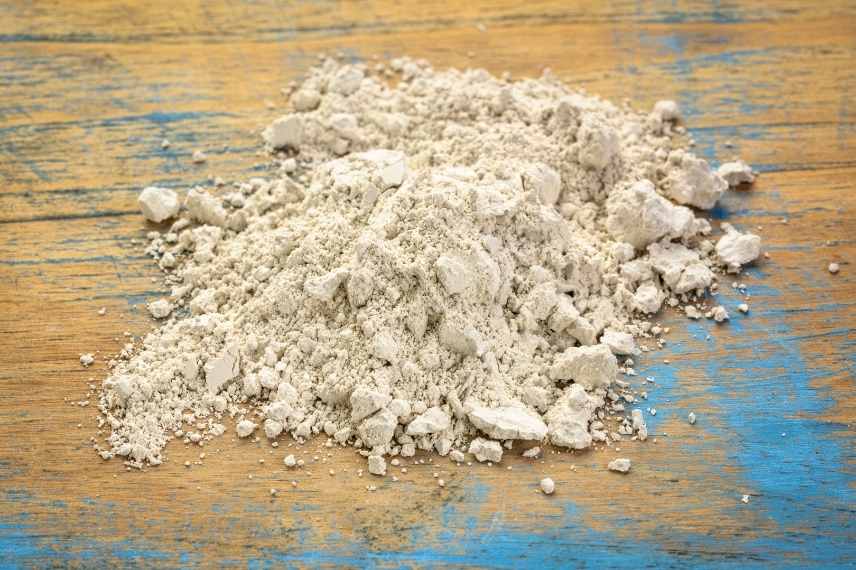
Diatomaceous earth is a 100% natural product
There are two types of diatomaceous earth:
-
Food-grade diatomaceous earth: the mildest type, used both in the garden and in homes, including for cats and dogs as a flea and tick repellent
-
Calcined diatomaceous earth: heated to high temperatures, it is more abrasive and mainly reserved for industrial use. It should therefore be avoided in homes and areas frequented by animals, as well as in vegetable gardens, gardens and chicken coops.
Diatomaceous earth, a formidable insecticidal solution
We previously saw that diatomaceous earth is a natural insecticidal perfect for exterminating unwanted insects that take up residence in homes. It can serve the same purpose in the garden, vegetable patch, and orchard. Moreover, it is an insecticidal approved for organic farming. However, it is hardly selective, which is why it should be used sparingly, in small doses, and very precisely.
Which insects are targeted?
That said, it proves highly effective against many pests such as aphids and scale insects, caterpillars and larvae, thrips, psyllids, whiteflies, beetles like flea beetles… or even ants, which, though not pests, can be a nuisance. Given such a broad spectrum of action, one might reasonably wonder how this diatomaceous earth works.
Its action is twofold: on one hand, this powder absorbs the fats from insects and dehydrates them, and on the other, its abrasive nature destroys their digestive tracts and exoskeletons. The insects die within hours or even days. Since diatomaceous earth works only mechanically, it is not at all toxic to birds, reptiles, or mammals that might consume these dead insects.
Slugs and snails tend to avoid diatomaceous earth. The slightest contact is fatal to them. At the very least, it creates a natural barrier against these gastropods.
How to use diatomaceous earth in the garden?
Diatomaceous earth is sprinkled directly onto the leaves or stems of infested plants, in small amounts, around the base of perennials, bushes, or vegetable plants, or around pots, containers, and planters.
Sprinkling should be done on a dry day with no rain forecast. Indeed, even a drop of water can attenuate, if not eliminate, its effectiveness, as diatomaceous earth dissolves in the soil. After rain or heavy dew, the application must be repeated.
The drawbacks of diatomaceous earth
Although highly effective against pest insects, diatomaceous earth has its limitations in terms of target specificity. Indeed, it acts selectively on insects that come into direct contact with the powder, primarily targeting creeping insects.
When the powder is applied to flowers or foliage, it can inadvertently affect beneficial insects such as ladybirds, earwigs, or other garden allies, as well as honeybees, solitary bees, and other pollinators. This is the main drawback of diatomaceous earth. For this reason, it is crucial to avoid sprinkling diatomaceous powder during plant flowering periods or in areas heavily frequented by insects. While it is less harmful to flying insects, the risk is never zero, and this product can negatively impact biodiversity.
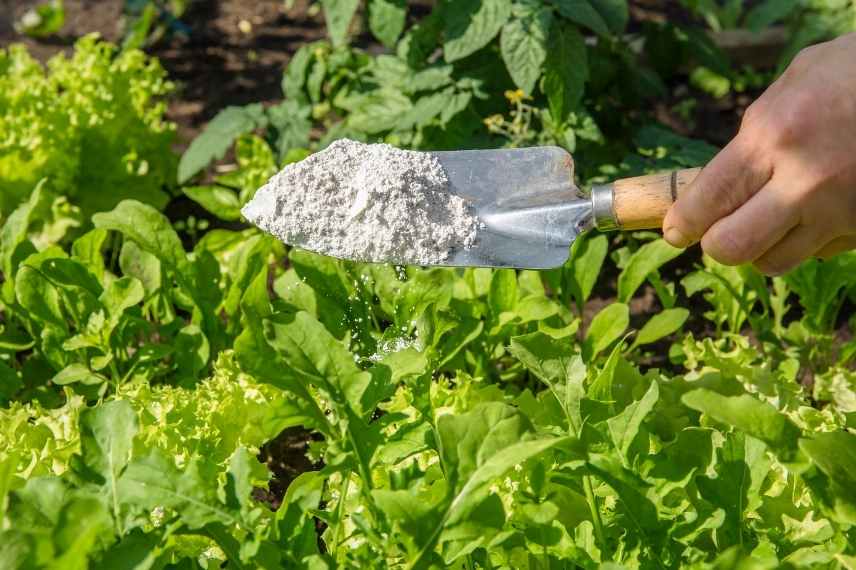
Diatomaceous earth should be used judiciously to avoid harming biodiversity
Diatomaceous earth is therefore an excellent natural product, but one that must be used with care. It serves more as a complementary measure within a broader pest management strategy rather than a miracle solution.
What precautions should be taken when using it?
Even though diatomaceous earth is natural, it shouldn’t be used carelessly. There are a few precautions to take to fully benefit from its advantages without risking unwanted effects:
-
Be cautious of inhalation: The powder is very fine, almost volatile, and can irritate the breathing passages if inhaled. When applied, especially indoors or in windy conditions, wear a mask or stand with your back to the wind. It’s not toxic, but it’s unpleasant to breathe in.
-
Moisture, its worst enemy: Diatomaceous earth loses its effectiveness when wet. It only works when completely dry. After rain or watering, wait until everything is thoroughly dry before reapplying a thin layer. And if used indoors, it’s best to avoid damp or poorly ventilated rooms.
Other unexpected uses in the garden
Diatomaceous earth isn’t just limited to its insecticidal role! In the garden, its properties can be utilised in various ways.
- Barrier against creeping pests: diatomaceous earth can be used as a natural barrier around sensitive areas (such as sowings or strawberry plants, for example). Simply trace a small circle of powder around the plants to be protected. Creeping insects or gastropods often hesitate to cross this “abrasive” line and go around the obstacle. It’s a simple, effective and above all non-toxic solution, perfect for protecting sensitive areas in the vegetable garden, terrace or balcony.
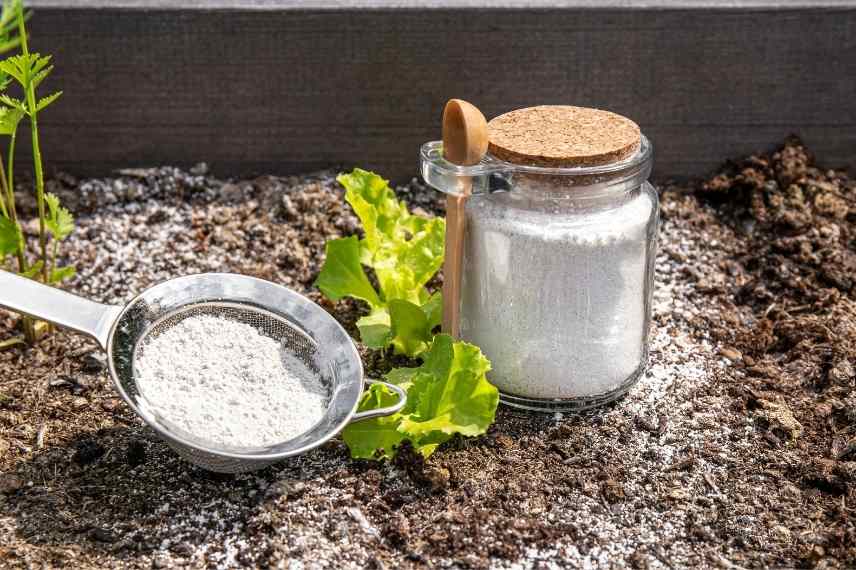
Diatomaceous earth makes an excellent barrier against slugs and snails
- Moisture absorption: diatomaceous earth is also naturally highly absorbent and porous. It can be used to dry out small excesses of moisture in a greenhouse, garden shed, or even in flower pot saucers. It can therefore help to slightly purify the atmosphere.
- Protection for seeds and bulbs: when it’s time to store seeds or bulbs for the next season, diatomaceous earth can prove useful. By adding a pinch of powder to storage bags or boxes, it will absorb residual moisture and repel small parasitic pests that might try to join the feast. It acts somewhat like a dry armour, preventing mould from developing and limiting attacks from insects such as weevils or moths.
- Gentle cleaner: the very fine particles of diatomaceous earth can be used as a mild abrasive to clean certain dirty gardening tools or pots without damaging them.
- Subscribe!
- Contents
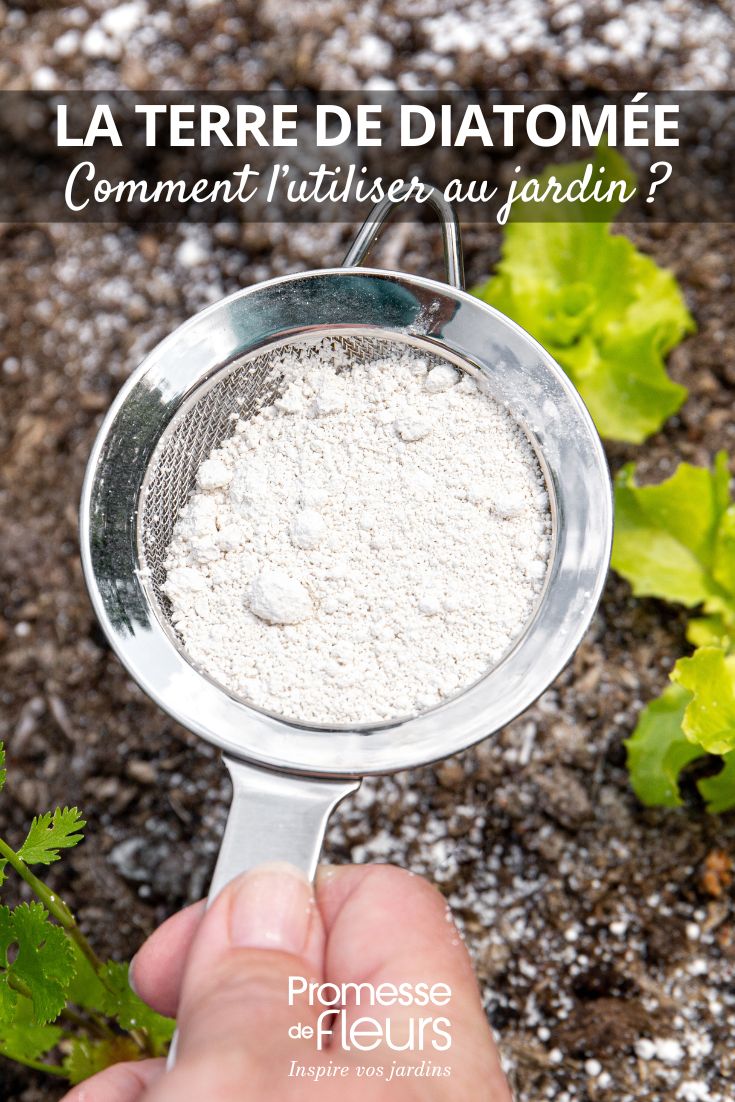































Comments